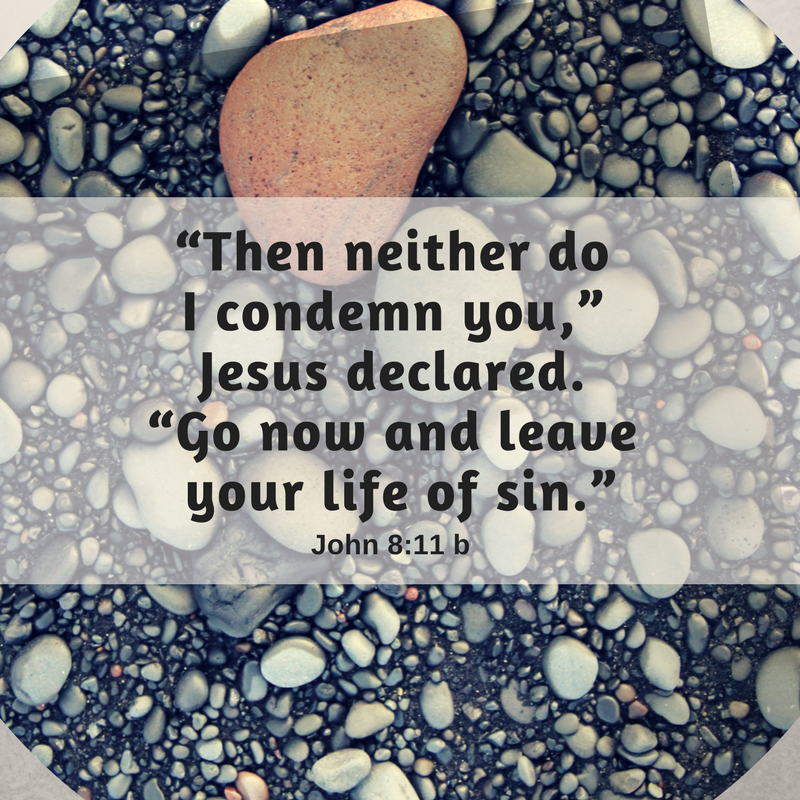
The Feast of Tabernacles has just ended, the crowds that filled Jerusalem are probably beginning to subside, but undoubtedly, the conversations and events surrounding Jesus are most likely still swirling in the minds and hearts of those who had heard Him speak. There were those who heard and believed He that was the Messiah, but from the farthest spectrum of disbelief and hate, there were those who wanted to seize and kill Him.
This was the atmosphere that Jesus intentionally entered when he arrived at the temple courts at dawn, to sit down and teach those who were there. He had spoken in previous days about His teachings coming from His Father in heaven, His miracles being done in God’s authority and power, and that it is He who gives living water to those who believe in Him. These were the statements and teachings that infuriated the religious leaders and the reason they sought to kill Him.
As Jesus was sitting in the temple courts teaching that morning, the teachers of the law and the Pharisees drug a woman in front of Jesus, a woman they had caught in adultery, and tried to set a trap for Jesus.
“Teacher, this woman was caught in the act of adultery. 5 In the Law Moses commanded us to stone such women. Now what do you say?” (John 8).
The woman must have been terrified and humiliated. She should have at least had the adulterous man with her, as it takes two to tango in an adulterous affair, yet she stood alone, in front of condemning men, who appear to be using her as a pawn to get at Jesus.
Jesus uniquely answers the question of the religious leaders by reaching to the ground and writing in the dirt. No one knows what He wrote, but the action itself must have created moments of uncomfortable silence before it was broken by the voices of those who condemned the woman and wanted to seize Jesus.
When they kept on questioning him, he straightened up and said to them,
“Let any one of you who is without sin be the first to throw a stone at her.”
8 Again he stooped down and wrote on the ground.
Jesus’ response strips the religious leaders of their “righteous coverings” and exposes their hearts at an individual level.
At this, those who heard began to go away one at a time, the older ones first, until only Jesus was left, with the woman still standing there.
The conviction of the moment will not be enough to change their plans of destroying Jesus Christ, but like light coming into a dark room, the Light of Truth condemned the darkness of their hearts and they scattered under it’s pure luminosity.
Only the woman was left standing and Jesus addressed her need:
Jesus straightened up and asked her, “Woman, where are they? Has no one condemned you?” 11 “No one, sir,” she said. “Then neither do I condemn you,” Jesus declared. “Go now and leave your life of sin.”
Her need was no different than that of the religious leaders, as all need to be forgiven by Jesus and saved from sin. Jesus had told one religious leader, Nicodemus, much earlier in His ministry that He had not come into the world to condemn the world, but that the world through Him might be saved. He gave this same message to this woman. Christ met her at her deepest need, the need of salvation in the moment, being stoned to death by the Pharisees and the religious leaders, but also He brought her face to face with her eternal need, turning away from her life of sin and following Jesus.
The religious leaders could have received the same invitation from the Lord if their hearts were soft toward the gospel, but instead, they like Pharaoh, had hardened their hearts and were unable to hear, let alone act upon the freeing declaration, “Neither do I condemn you, go now and leave your life of sin.” They could have stuck around, not picked up a stone, and humbly received the message of forgiveness from the lips of Jesus, but they refused to humble themselves as they passage in 2 Chronicles 7:14 declares, and they missed out on personal healing and forgiveness of sin.
“…if My people who are called by My name will humble themselves, and pray and seek My face, and turn from their wicked ways, then I will hear from heaven, and will forgive their sin and heal their land.”
The message has not changed today, it has been fulfilled at the cross, where Jesus looked down upon the same men, upon all mankind, and said, “Father, forgive them for they no not what they are doing” (Luke 23:34). All mankind are recipients of God’s love for the world spoken by Jesus in John 3:16,
16 For God so loved the world, that he gave his only begotten Son, that whosoever believeth in him should not perish but have everlasting life.
We are given a choice to accept this gift of salvation and “go and leave our life of sin”, or reject Him and perish. Jesus came and paid the price of the adulterous woman’s sin on the cross, the religious leaders’ sin, and my sin as well. It is finished, He has paid it, and the choice is placed at our feet, to decide to follow Jesus or remain walking dead on a road leading to hell.
Not long after the incident with this woman, Jesus said this, “I am the light of the world. Whoever follows me will never walk in darkness, but will have the light of life” (John 8:12). We have a choice to make, to continue down the walk of darkness that leads to eternal damnation or follow the Light of the World who leads us to everlasting life. It is a black and white decision, there is nothing grey in the statement. Choose death or choose life. Choose to remain in darkness or choose the Light of Life. What will you choose?
